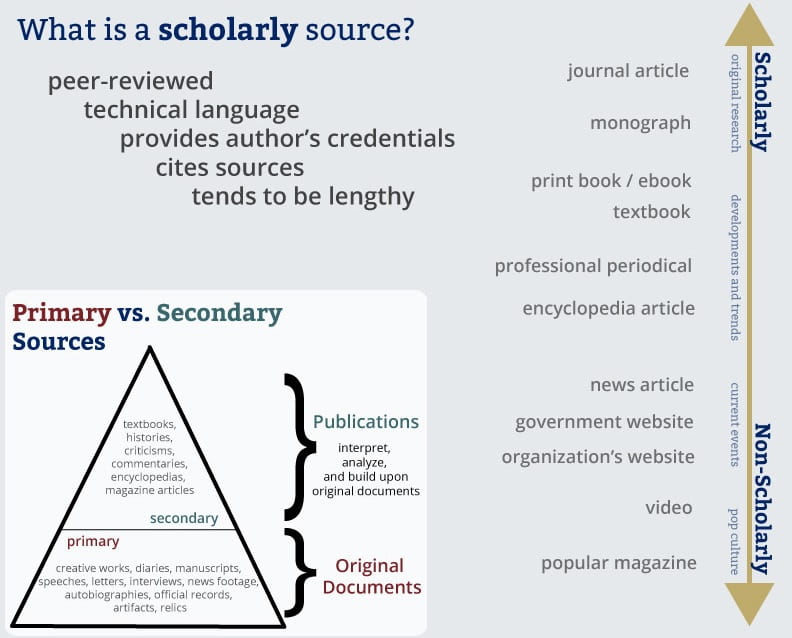Types of Sources and Tips for Evaluating
Quick links: Types of Sources and Differences | Tips for Evaluating Sources and Interpreting Information | Scholarly & Primary vs. Secondary Sources
Differences between Scholarly Journals, Professional Periodicals, and Popular Magazines

Tips for Evaluating Sources and Interpreting Information
When evaluating a source, consider its:
Authority: the credibility of the source
- Who is the author? What are his/her credentials and affiliations?
- Is the author qualified to write on the topic?
- What type and quality of sources does the author use? Does she/he cite these sources?
Suitability: the appropriateness of the source for the research project
- Is this a primary or secondary source?
- Does the source fit the needs of the research project?
- What is the source’s purpose?
- Is this a unique source, or similar to sources of the same nature or purpose?
- What is the value of the information presented in this source as compared to that of other sources?
- Is the content in this source focused on a specific aspect of the topic, or is it more of an overview of the topic?
Currency: the timeliness of the information
- When was the source published?
- Is the information (including data) in the source current?
- Does the time-frame of the information within the source fit the needs of the research project?
Accuracy: the correctness of the content
- Are the sources that are referenced completely and correctly cited?
- Is it clear who has responsibility for the accuracy of the information in the source?
- Has the source been peer-reviewed?
Objectivity: the bias of the author
- Who is the intended audience of the source?
- Are the ideas and arguments in the source valid, supported by evidence, and well-researched?
- Does the information in the source include generalizations that aren’t supported by evidence?
- What is the tone of the source? What is the author’s purpose?

